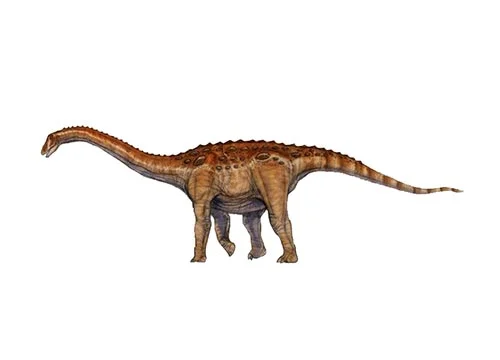Aegyptosaurus (Egypt lizard)

Aegyptosaurus, also known as “Egypt lizard,” was named by paleontologist Ernst Stromer in 1932. This herbivorous dinosaur lived during the Late Cretaceous period, approximately 98-93 million years ago. Aegyptosaurus was a sauropod, estimated to measure up to 15 meters in length. Aegyptosaurus fossil remains were found in Egypt – Baharîje Formation. Niger – Irhazer Shales Formation, shedding light on the ancient ecosystems of this region and it is offering valuable insights into the prehistoric world and the evolution of sauropods.
Late Cretaceous, 98-93 million years ago
Aegyptosaurus Facts
When we think of ancient Egypt, grand pyramids and intricate hieroglyphs often come to mind. However, beneath the sands of this historically rich land, another captivating story unfolds—the tale of Aegyptosaurus, the “Egypt lizard.” Named by paleontologist Ernst Stromer in 1932, this herbivorous giant from the Late Cretaceous period takes us on a journey back in time, shedding light on the prehistoric world and the evolution of sauropod dinosaurs.
Aegyptosaurus, a sauropod dinosaur, graced the Earth approximately 98-93 million years ago, during the Late Cretaceous period. This period was marked by the presence of numerous iconic dinosaurs, and Aegyptosaurus was undoubtedly a majestic member of this ancient world.
Estimated to measure up to 15 meters in length, Aegyptosaurus was a sizable herbivore. Like other sauropods, it possessed a long neck, a massive body, and a long tail. These features were adaptations that allowed it to efficiently browse on vegetation, making it one of the giants of its time.
Fossil remains of Aegyptosaurus have been discovered not only in Egypt but also in Niger. In Egypt, these remains were found within the Baharîje Formation, while in Niger, they were unearthed in the Irhazer Shales Formation. These findings offer invaluable insights into the diversity of sauropods in different regions during the Late Cretaceous and the unique ecosystems in which they thrived.
As a herbivore, Aegyptosaurus played a vital role in shaping the prehistoric landscapes by consuming vast quantities of plant matter. Its size and feeding adaptations allowed it to graze on vegetation, contributing to the complex web of life during this era.
Aegyptosaurus is a critical piece in the puzzle of sauropod evolution. Studying its anatomy and ecological role helps scientists better understand how these massive dinosaurs diversified and adapted to various environments throughout their long evolutionary history.
Aegyptosaurus, the “Egypt lizard,” though not as famous as some of its dinosaur counterparts, carries a unique story from the sands of ancient Egypt and Niger. This sauropod dinosaur provides valuable insights into the ancient ecosystems of these regions during the Late Cretaceous and the evolutionary journey of these colossal herbivores.
As paleontologists continue to unearth more about Aegyptosaurus and its prehistoric world, we gain a deeper appreciation for the incredible diversity of life that once thrived on our planet. Each discovery reinforces the idea that the Earth’s history is a tapestry woven with countless fascinating and awe-inspiring creatures, including the majestic Aegyptosaurus.



